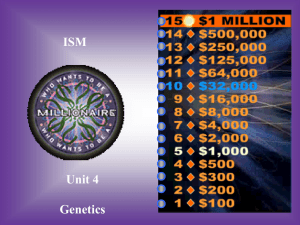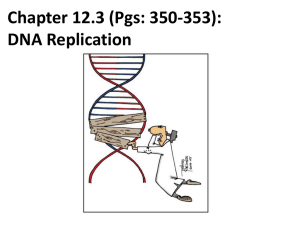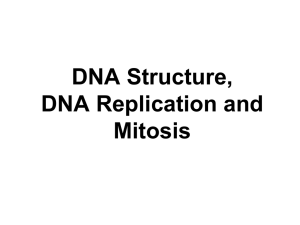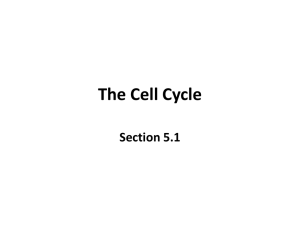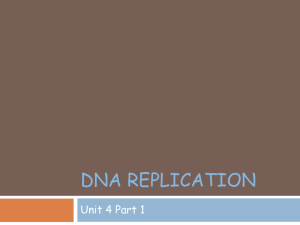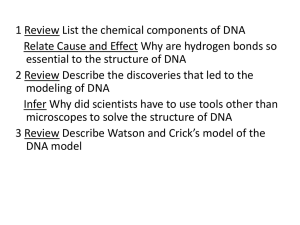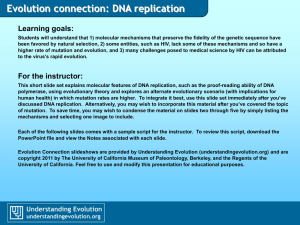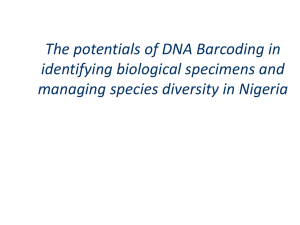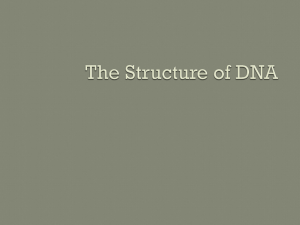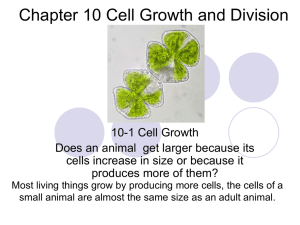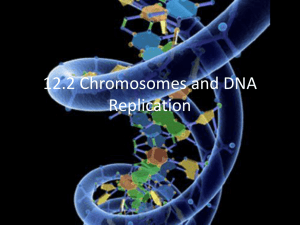DNA Replication
advertisement
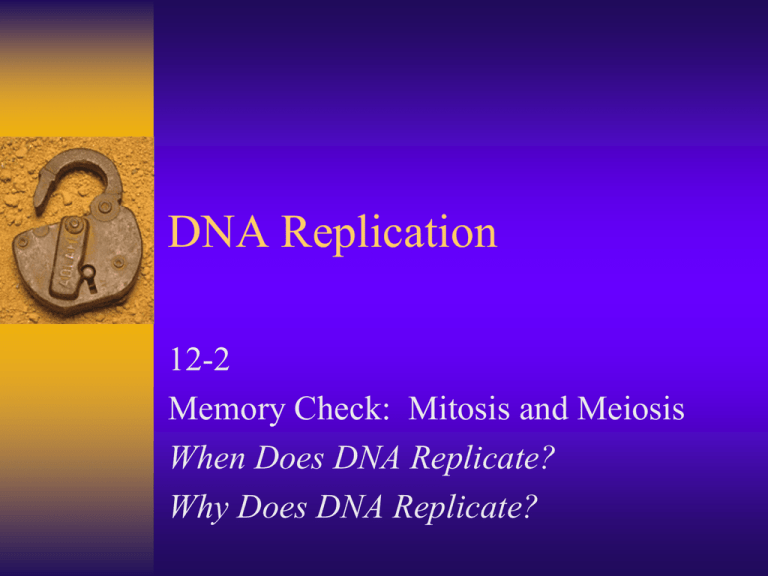
DNA Replication 12-2 Memory Check: Mitosis and Meiosis When Does DNA Replicate? Why Does DNA Replicate? When new cells are made… DNA must be replicated exactly All somatic cells that undergo mitosis get a new strand of DNA and an “old” one This occurs in the S phase of interphase Cannot be accomplished without the aid of enzymes. Step 1 Unwind and Unzip! Enzyme: DNA helicase Action: breaks H-bonds that link bases together Result: Replication Fork made by using additional proteins that keep the DNA from re-twisting (keep site open) Step 2 Create New DNA Strands Enzyme: DNA polymerase Action: Adds new nucleotides to the exposed bases using the base-pair rule; also proofreads every connection at this time (avg. 1 error per 2 billion nucleotides) Result: 2 new double DNA strands are created (but still attached) Step 3 Detach Enzyme and Re-Coil Enzyme: Ligase Action: DNA polymerase and proteins from helicase are removed, gaps filled in Result: 2 new DNA molecules twist into their finalized shape Food For Thought Does this “replication fork” only occur once and go base by base? What could be the potential problem if it occurred this way? Too Slow! In fact, from start to finish it would take 33 days! There are multiple replication forks going at once all over DNA to speed up the process Let’s Visualize This! http://www.lpscience.fatcow.com/jwanamaker/animations/DNA%20Replicatio n%20-%20long%20.html http://www.johnkyrk.com/DNAreplication.html http://www.ncc.gmu.edu/dna/repanim.htm http://highered.mcgrawhill.com/sites/0072437316/student_view0/chapter14/animations.html# http://207.207.4.198/pub/flash/24/menu.swf



